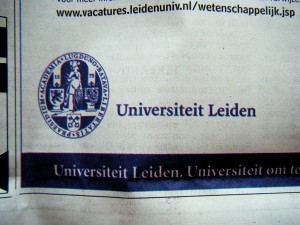Spring is here, and, as in Autumn, this means new products released and new version numbers. But how major or minor will the releases really be? Can you tell from the versioning alone? Continue reading “Software versions – how strange the change from major to minor”
Google Appliance: the Emperor’s new box
Google has announced its new Search Appliance, version 5.2. As usual, this has been marked by a slew of presentations — and of course, a video on YouTube. Probably the main upgrade: a 10 million document limit on one server.
The box, dressed in imperial yellow — or somewhat more irreverently: the pizza quattro formaggi — of course goes with the times. Faster (probably multi-core) processors allow for the higher document count. That’s not so much Google’s achievement, though you shouldn’t forget that this is one enterprise search solution that actually comes with the hardware to run on, and the company makes sure it can handle its workload. But what else is new? Continue reading “Google Appliance: the Emperor’s new box”
Enterprise search: free as in free beer?
Searching information — really, how hard can it be? So, why wouldn’t you go out and get a search engine that’s for free? Well, to stick to the analogy of “free beer,” you might wake up in the morning with a headache, only to find your wallet gone. Continue reading “Enterprise search: free as in free beer?”
All universities are equal…
 …though some (especially the larger, more disparate institutions) may be more equal than others. I remember talking about web content management problems with Gerry McGovern in 2006, and he told me “all universities are the same.” At the time, I was still project manager at Leiden University, so naturally, I had to disagree and say ours really was different — to which he replied “that’s what they all say.” I liked the irony in that comment, and talking to visitors at conferences recently, I’m starting to see his point. Continue reading “All universities are equal…”
…though some (especially the larger, more disparate institutions) may be more equal than others. I remember talking about web content management problems with Gerry McGovern in 2006, and he told me “all universities are the same.” At the time, I was still project manager at Leiden University, so naturally, I had to disagree and say ours really was different — to which he replied “that’s what they all say.” I liked the irony in that comment, and talking to visitors at conferences recently, I’m starting to see his point. Continue reading “All universities are equal…”
Coming second in a one-horse race
While writing reviews for the new Enterprise Search Report, I found myself frequently saying you should test the effectiveness of a given product against your own corpus of content, which is reiterated in the Report’s “Advice” section. But I can’t help but wonder how often an actual bake-off between vendors on a shortlist is organized. Continue reading “Coming second in a one-horse race”
Web standards – can’t you see?
 It’s surprising to see how many major WCM implementations still suffer serious cross-browser compatibility problems. Or completely ignore accessibility standards. I like to browse the web with a multitude of browsers and devices – basically, whatever I have at hand or feel like. I don’t particularly enjoy being dictated to run Internet Explorer on a Windows PC because some company decided that’s what the majority of users will use. It annoys me – and I’m not even visually impaired. Continue reading “Web standards – can’t you see?”
It’s surprising to see how many major WCM implementations still suffer serious cross-browser compatibility problems. Or completely ignore accessibility standards. I like to browse the web with a multitude of browsers and devices – basically, whatever I have at hand or feel like. I don’t particularly enjoy being dictated to run Internet Explorer on a Windows PC because some company decided that’s what the majority of users will use. It annoys me – and I’m not even visually impaired. Continue reading “Web standards – can’t you see?”
CM, IA, UX and other alphabet soup
 I suppose this must have come up before – most notably, at the inception of CM Pros (sorry – I wasn’t there). But what exactly would we define as the difference between content management and information architecture? Is CM part of IA, parallel, overlapping or something altogether different? Not to mention the further confusion that user experience (UX) is adding to the soup. Continue reading “CM, IA, UX and other alphabet soup”
I suppose this must have come up before – most notably, at the inception of CM Pros (sorry – I wasn’t there). But what exactly would we define as the difference between content management and information architecture? Is CM part of IA, parallel, overlapping or something altogether different? Not to mention the further confusion that user experience (UX) is adding to the soup. Continue reading “CM, IA, UX and other alphabet soup”
What’s the use of Dublin Core?
 While designing a new CMS implementation we wanted to really get it right. That meant outputting strict xhtml, css formatting, trying to adhere to accessibility guidelines, etcetera. Of course, the issue of metadata came up. What metadata would we render to the web pages? And in what format? Which is what got me looking at Dublin Core. Continue reading “What’s the use of Dublin Core?”
While designing a new CMS implementation we wanted to really get it right. That meant outputting strict xhtml, css formatting, trying to adhere to accessibility guidelines, etcetera. Of course, the issue of metadata came up. What metadata would we render to the web pages? And in what format? Which is what got me looking at Dublin Core. Continue reading “What’s the use of Dublin Core?”
A-Z Indexes: Bane or Boon?
 In his EContent column of July 2005, Bob Doyle wrote about A-Z indexes (“Your Site–from A to Z”). He suggests using such an index as a less expensive, pragmatic alternative to taxonomies and thesauri. Building and implementing classification systems takes a lot of resources while the payback for the investment is unclear. A well-done index, on the other hand, is a modest investment with clear findability benefits. Continue reading “A-Z Indexes: Bane or Boon?”
In his EContent column of July 2005, Bob Doyle wrote about A-Z indexes (“Your Site–from A to Z”). He suggests using such an index as a less expensive, pragmatic alternative to taxonomies and thesauri. Building and implementing classification systems takes a lot of resources while the payback for the investment is unclear. A well-done index, on the other hand, is a modest investment with clear findability benefits. Continue reading “A-Z Indexes: Bane or Boon?”



